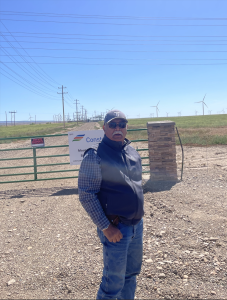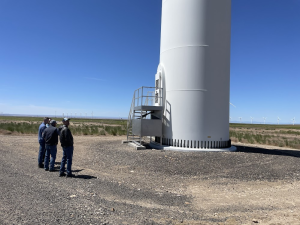There’s broad recognition that Idaho is in the middle of an energy transformation. Reports, conferences, and utility plans all spell out the same thing: Renewable energy is the most cost effective and preferred way to meet rapidly growing energy needs in the Northwest. Tired, polluting, and extractive fossil fuel resources are being retired and replaced with energy sources that better benefit energy customers and communities. It’s change we welcome, and change that needs to be managed with a sensitive touch.
Development of this scale inevitably brings uncertainty and conflict, and in Idaho renewable siting is now a politically contentious topic. There are real concerns such as wildlife impacts, cultural sensitivities, and energy system needs that are growing areas of ICL’s attention. But the renewable space is also awash in misinformation and reactionary pushback that also deserves consideration. Utilities, government offices, project developers, and local officials are all grappling with how to navigate the complexities of renewable sitting. It’s a lot, but if there is anyone in Idaho with experience navigating energy development and local concerns, it’s John Steiner.
A rancher, an inventor, and an energy developer

John is a tough guy to sum up. In boots, blue jeans, and with a relaxed demeanor he owns the image of an Owyhees rancher. In his long and active career he’s been a rancher, inventor, agricultural innovator, an engineer, and, starting in the 1980s, an early embracer of renewable energy. As technology and the grid caught up to him, John became a successful wind developer and owner.
John is a member of Idaho Energy Freedom (IEF), a local organization advocating for sensible renewable siting policy. IEF recently invited ICL, The Nature Conservancy, county planners, and Public Utilities Commission staff to tour a wind project John developed on private land outside of Mountain Home. We met just off of I-84 for some coffee and cinnamon rolls before driving a little north across rangeland.
John was part of it all on this project. Our tour started in view of the first anemometer installed on the site 25 years ago across from lines that tie into Idaho Power’s system. Towers and turbines followed in waves over the years, located optimally to avoid land and wildlife impacts and to maximize power generation. Construction is finished, for now, but control and software updates continually squeeze additional watts out of the generally consistent west winds that were blowing all morning.
But for as much as energy is about wind potential and power, it’s also about people. John spent years sorting out agreements with landowners and local government to preserve existing rangeland and pass benefits onto the local community. Elmore County recovers millions of dollars a year from this project alone to fund schools, infrastructure, and services. When sited appropriately, these projects have a few manageable drawbacks and do plenty of good.
Wind development is a hot topic in southern Idaho now, and John spoke ably and compassionately about common concerns. He recognizes misinformation and resistance as a symptom of real concerns about place, lifestyle, property, and culture. There’s authenticity in his voice, earned from decades living in communities like the ones in Idaho and Oregon where he works. I think John’s success comes from both his tenacity and a willingness to listen. It’s an important lesson to remember that local issues are solved person by person and all concerns are real to the folks that have them.

We ended our tour at the base of a turbine spinning rapidly in the wind, generating over a megawatt of power. It was an impressive machine, aerodynamically honed to spin with an audible woosh as each blade passed overhead when standing right next to the tower. A transformer on the ground hummed, and air conditioning units at the base kept the steel tower cool in the direct sun. It’s not something I’d like to live right next to, but 100 yards away, cows grazed unfazed—the turbine was out of earshot and out of mind. In the right places, with reasonable setbacks, and with agreements to pass benefits onto landowners, counties, and utility ratepayers, projects like this are easy to support as a conservationist and energy advocate.
